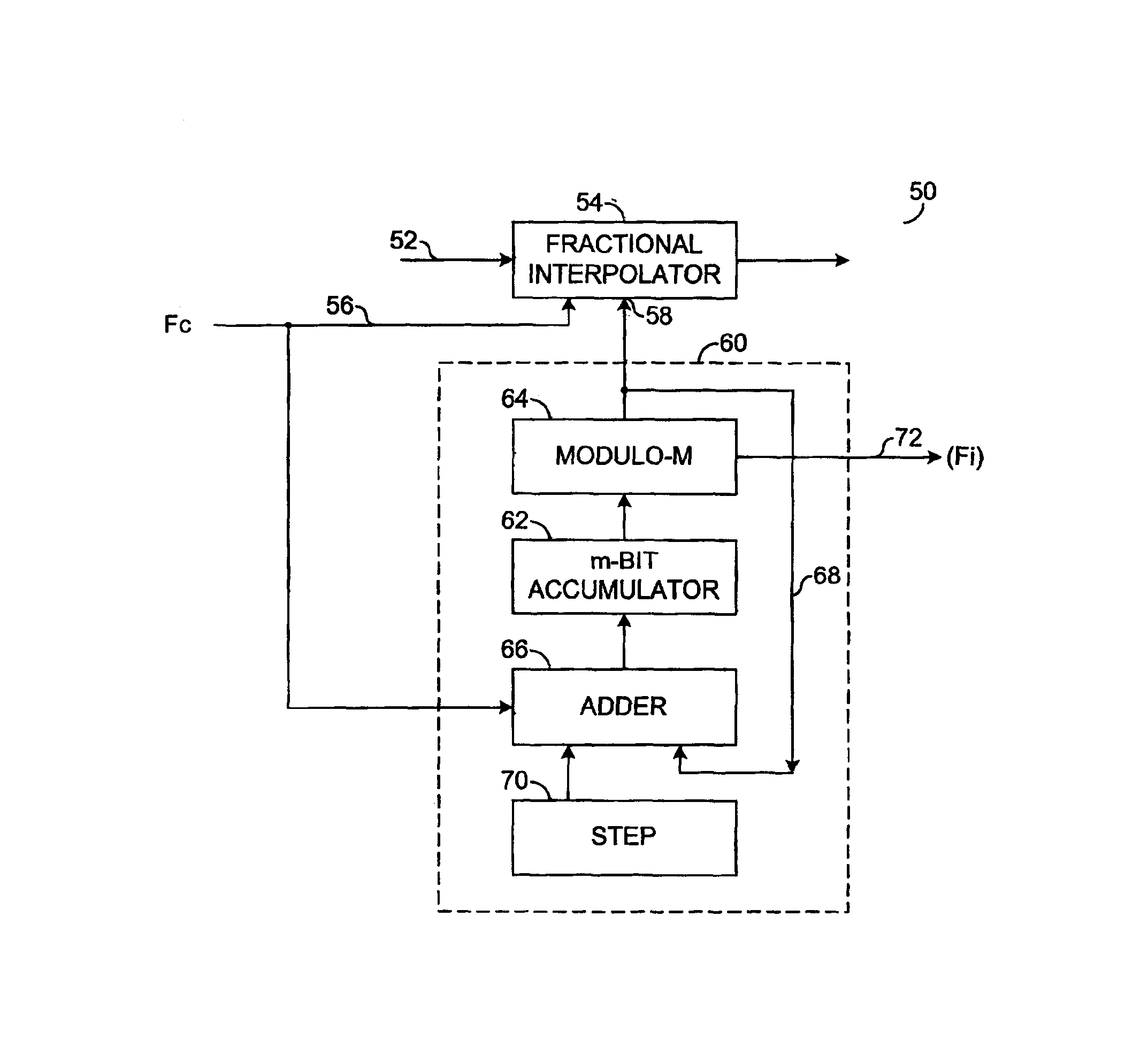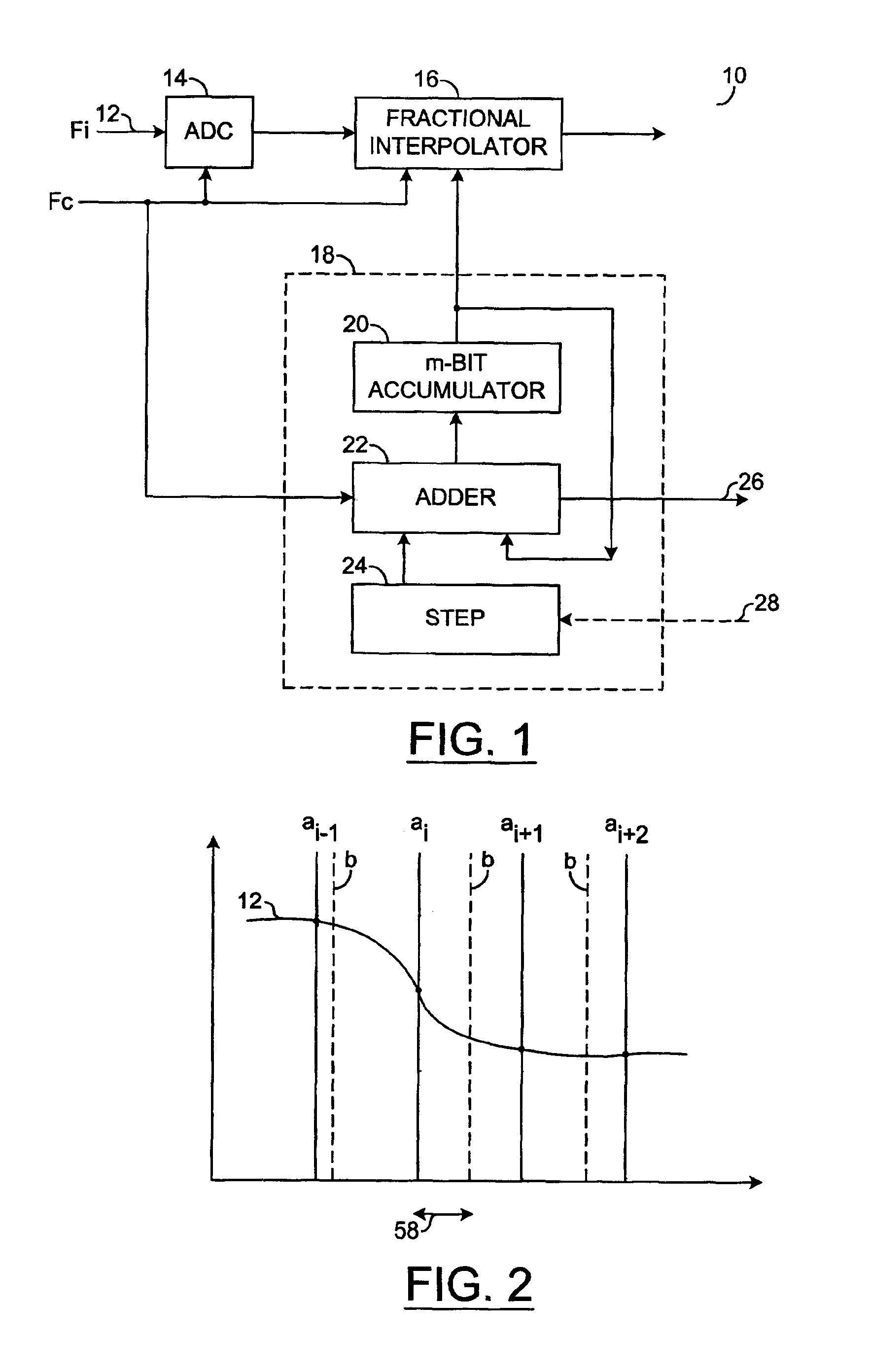Interpolator
a signal interpolator and interpolator technology, applied in the field of signal interpolators, can solve the problems of inability to use a single phase locked loop (pll) to generate both of the above frequencies, inability to achieve the effect of generating the output frequency of the pll, and inability to achieve the effect of greater flexibility
- Summary
- Abstract
- Description
- Claims
- Application Information
AI Technical Summary
Benefits of technology
Problems solved by technology
Method used
Image
Examples
Embodiment Construction
[0023]FIG. 4 shows the basic building blocks of a signal interpolator in a first embodiment. The purpose of the circuit 50 in this embodiment is to enable the circuit 50 operating from a certain clock frequency (e.g., Fc) to be able to extract and process data related to a different clock frequency (e.g., Fi).
[0024]The circuit 50 is clocked at the circuit clock frequency Fc, and the circuit receives digitised values of an input signal 52 also sampled using the same circuit clock frequency Fc. The digitised samples are fed to a fractional interpolator 54 for re-calculating (interpolating) the digitised samples according to different timings matched to the clock frequency Fi. The fractional interpolator 54 has a clock signal input 56 for receiving the circuit clock frequency Fc, and a digital control input 58 for controlling the timing at which a new sample is calculated relative to two consecutive samples of the input signal 52. Referring to FIG. 2, the magnitude of the digital contr...
PUM
 Login to View More
Login to View More Abstract
Description
Claims
Application Information
 Login to View More
Login to View More - R&D
- Intellectual Property
- Life Sciences
- Materials
- Tech Scout
- Unparalleled Data Quality
- Higher Quality Content
- 60% Fewer Hallucinations
Browse by: Latest US Patents, China's latest patents, Technical Efficacy Thesaurus, Application Domain, Technology Topic, Popular Technical Reports.
© 2025 PatSnap. All rights reserved.Legal|Privacy policy|Modern Slavery Act Transparency Statement|Sitemap|About US| Contact US: help@patsnap.com



